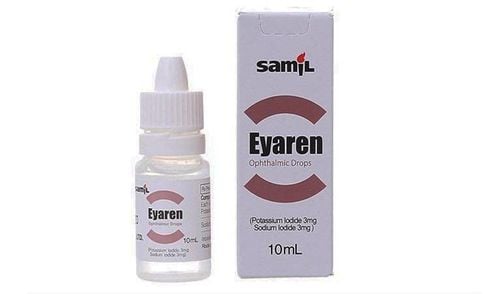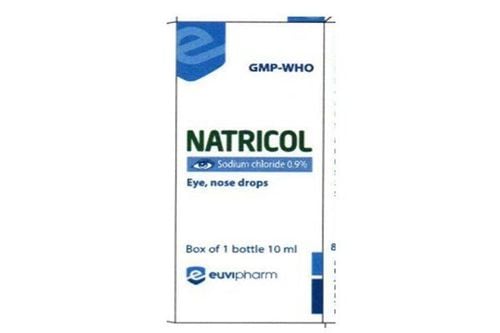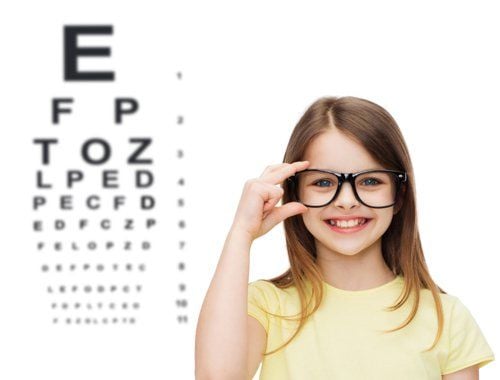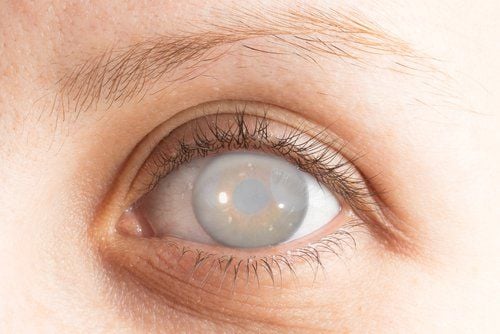This is an automatically translated article.
Central retinal vein occlusion is a common disease caused by disorders of blood vessels in the retina, which can cause visual impairment, even leading to blindness if not detected and treated promptly and correctly.
1. What is central retinal vein occlusion?
The retina is the tissue lining the inner surface of the eye that is sensitive to light. The retina is responsible for converting visual images to nerve signals, through the optic nerve, which sends signals to the brain. The retinal vein is responsible for transporting blood from the retina back to the heart. The retinal vein consists of the central vein and the branch vein. The central retinal vein runs inside the optic nerve. Smaller veins run along the inner layer of the retina to bring blood into the central vein of the retina.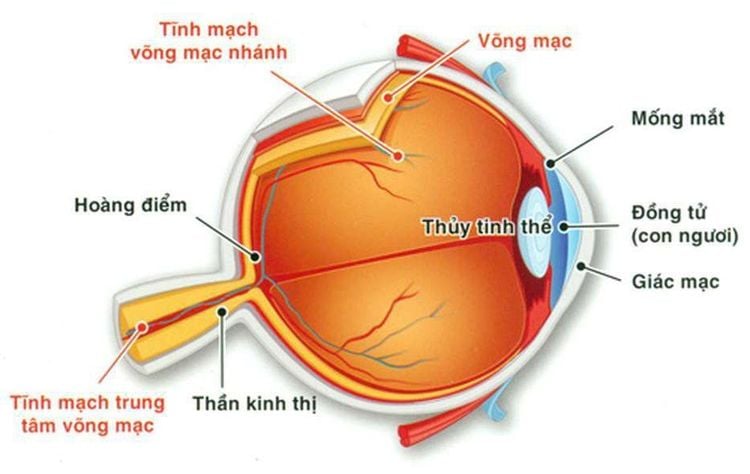
Tĩnh mạch trung tâm võng mạc chạy dọc trong dây thần kinh thị giác
Retinal vein occlusion is a common retinal vascular disorder, which is a blockage of the veins due to blood clots or fluid accumulation, impairing the function of the retina and affecting vision. Clinically, retinal vein occlusion is divided into branch vein occlusion and central venous occlusion:
Branch retinal vein occlusion is a disease that occurs when one of the small veins in the retina is blocked by blood. block. Branch retinal vein occlusion accounts for about 30% of venous occlusions. If the vein is blocked to drain blood in the macular area, the patient will have macular edema, reducing vision; Central retinal vein occlusion is a blockage of the return circulation, which occurs in the venous trunk - the confluence of the venous branches. The disease is not acute, but it is easy to recur. Central retinal vein occlusion is common in people over 50 years of age (incidence up to 90%) and the long-term prognosis of the disease is quite poor because it causes many eye complications. Retinal vein occlusion is a disease that can cause severe vision loss, even blindness, due to severe complications of the disease in case the patient is not promptly detected and treated.
2. Causes of central retinal vein occlusion
Central retinal vein occlusion usually occurs because the arteries harden, causing blood clots. People with narrowing, damaged blood vessels or people with the following chronic diseases are prone to occlusion of the central retinal vein:
Atherosclerosis; Glaucoma ; Diabetes ; Hypertension; High cholesterol; Macular edema; Blood disorders affecting blood clotting; Smoker; People over 60 years old. In addition, about 10% of cases of retinal vein occlusion have no known cause.
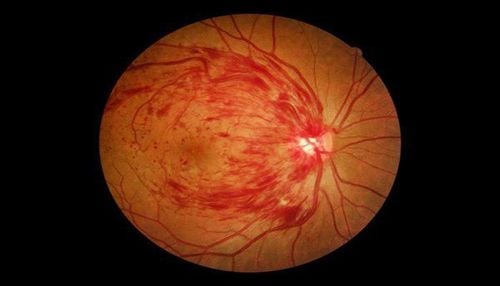
Tắc tĩnh mạch võng mạc thường xảy ra do các cục máu đông gây tắc tĩnh mạch
3. Symptoms of central retinal vein occlusion
Central retinal vein occlusion usually occurs suddenly in one eye. Symptoms can range from mild to severe depending on the severity and location of the blockage. There are even cases where there are no symptoms or just a black spot in the eye, which does not affect vision.
Meanwhile, others have basic symptoms including: Sudden loss of vision, feeling like seeing through fog or black clouds in front of their eyes, vision may be severely impaired within minutes or after 2-3 days. The patient's field of vision may be narrowed, partial or complete loss of vision. Symptoms of vision changes can be short-term or persistent, depending on the patient's general condition. The disease usually does not cause pain, soreness, redness or tears,...
When making a diagnosis, the doctor will apply a pupil dilator to examine the fundus. The image obtained in the patient's eyes is an irregularly dilated retinal vein, if there is a lot of retinal presence, it can cause the arteries to narrow, there may be cottony, spongy secretions on the retina, diffuse retinal edema ,... In the complicated stage, the patient had cystic macular edema, iris neovascularization, retinal neovascularization, neovascular glaucoma, optic nerve atrophy,... leading to blindness.
4. Treatment of central retinal vein occlusion
Central retinal vein occlusion should be treated in specialized ophthalmology hospitals. Here, doctors will have patients perform diagnostic imaging tests such as retinal fluorescein angiography or retinal tomography to determine disease morphology and have appropriate treatment. Early treatment helps prevent complications of the disease, while improving the patient's vision.
4.1 Medical treatment Using antiplatelet drugs; Treatment to reduce permeability and hemodynamic disorders; Anti-bleeding and exuding; Use corticosteroids when there is an inflammatory reaction. 4.2 Other treatments Laser retinal photocoagulation: Depending on doctor's prescription to control bleeding and edema; Freeze treatment and perform surgery when indicated; Photocoagulation, cryocoagulation or electrocoagulation of the ciliary body in the presence of glaucoma complications. The eyeball may need to be removed if the pain persists. In addition, because central retinal vein occlusion is related to systemic diseases, patients need to see a general specialist to detect and treat diseases such as hypertension, dyslipidemia, diabetes diabetes,... or detect and treat eye diseases for effective and thorough treatment.

Bệnh nhân nên đi khám tổng thể và chuyên khoa mắt để kịp thời phát hiện và điều trị bệnh
5. Preventive measures for retinal vein occlusion
Effective treatment of systemic diseases causing retinal vein occlusion such as hypertension, diabetes,...; Periodic eye examination (for the elderly, people with nearsightedness or vascular disease) once a year; examine immediately when feeling abnormal signs so that the doctor can promptly give appropriate treatment methods, have a chance to protect and restore vision; Follow a scientific, healthy diet to reduce plaque, reduce blockages in the flow of blood vessels. Specifically, should eat low-fat foods, maintain regular physical activity, quit smoking, ... When the central retinal vein occlusion, if not treated early, it will cause many dangerous complications. such as glaucoma, bleeding in the eye, retinal detachment or even blindness,... Therefore, it is necessary to detect and treat the disease as soon as there are signs of the disease to minimize the risk of encountering these diseases. unpredictable complications.
Eye specialties at Vinmec International General Hospital are the leading medical facilities in the country in the examination and treatment of eye-related diseases, with comprehensive quality in both expertise and medical services.
Eye specialist at Vinmec has comprehensive vision and eye health care functions for children, adults and the elderly including: refractive error check, laser treatment and surgery. In addition, the department also has the task of coordinating with other clinical departments in the treatment of pathological complications and eye injuries caused by accidents.
Besides, the team of Ophthalmologists here are experienced doctors who have implemented many types of surgery from routine to difficult surgeries, especially techniques that require aesthetics. . With enthusiasm and love for the profession, the team of doctors working at Vinmec always gives customers the best services with the highest service quality.
Customers can go directly to Vinmec Health System nationwide to visit or book an appointment online HERE.
Recommended video:
Periodic health check at Vinmec: Protect yourself before it's too late!
SEE MORE
Refractive error screening package Young children can also have farsightedness Astigmatism is as worrying as nearsightedness





